Thanks to website builders like Webflow vs Wix, building a good-looking, functional website now only takes a few taps of your fingertips. But between Webflow and Wix, which one should you choose then?
Don’t worry! We’ll compare the two platforms side-by-side in 7 crucial aspects to help you better visualize which one fits you most:
- #1. Pricing
- #2. Ease of use
- #3. Website templates
- #4. Design & customization options
- #5. Sales & marketing features
- #6. SEO & blogging tools
- #7. Support
Let’s dive in!
Need Help to Migrate Your Store?
If you are considering migrating to a different platform, LitExtension provides an excellent migration service to accurately and securely transfer your data from your current eCommerce platform to a new one.
An Overview Of Wix vs Webflow
What is Webflow?
Webflow is a US-based SaaS company that offers website building and hosting services. The platform’s robust design tools and ready-made templates allow users to build and manage their websites without coding.
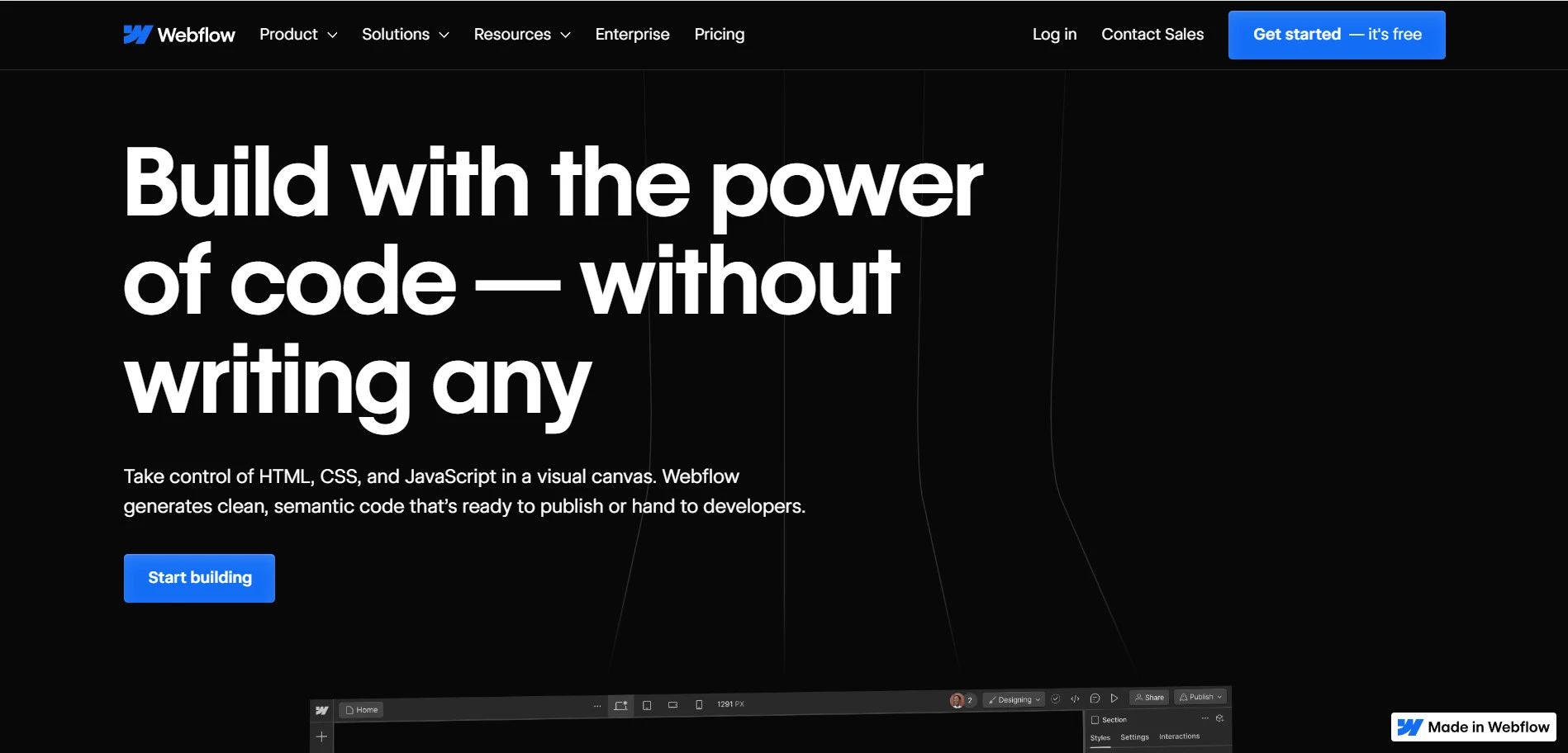
✨ Webflow’s highlights:
- The platform’s extensive design tool gives you extensive customization over your website’s looks and feels.
- You can add beautiful animations (e.g. scrolling, hover effect, etc.) on your website without plug-ins.
- Webflow enables you to easily build a website by choosing from 2,000+ responsive templates.
🔎 Check out our unbiased Webflow review for more detailed information on its pricing plans, features, pros, and cons.
What is Wix?
Like Webflow, Wix is also a multi-purpose website builder platform that makes website creation accessible to everyone. If Webflow is known for its limitless customization, Wix is loved for its simplicity.

✨ Wix’s highlights:
- You can easily customize your website design with an intuitive WYSIWYG (What you see is what you get) website editor– which is perfect for beginners and non-techies
- If you want to add lightweight eCommerce features, Wix is better than Webflow
- The Artificial Design Intelligence (ADI) editor of Wix enables you to build a website much faster
🔎 Interested in exploring Wix’s features, pricing and how it stacks up against other platforms? Check out our articles on:
- Wix eCommerce Review – All You Need to Know
- Wix Alternatives: 11 Best Solutions for Any Websites
Webflow vs Wix: A Detailed Side-by-Side Comparison
#1. Pricing
Building a professional-grade website is important, but it shouldn’t cost you too much. Luckily, both Webflow vs Wix pricing plans are relatively affordable. But which one is more affordable? Let’s see!
Webflow
Webflow offers a diverse set of plans, starting with a free plan for those experimenting or working on personal projects. With Webflow’s free plan, you can only add 2 pages with Webflow branding and can’t connect your custom domain.
Webflow costs you $18/month for static sites and $29/month if you need more CMS items and bandwidth. For more advanced needs, you can try their Business plan at $49/month.
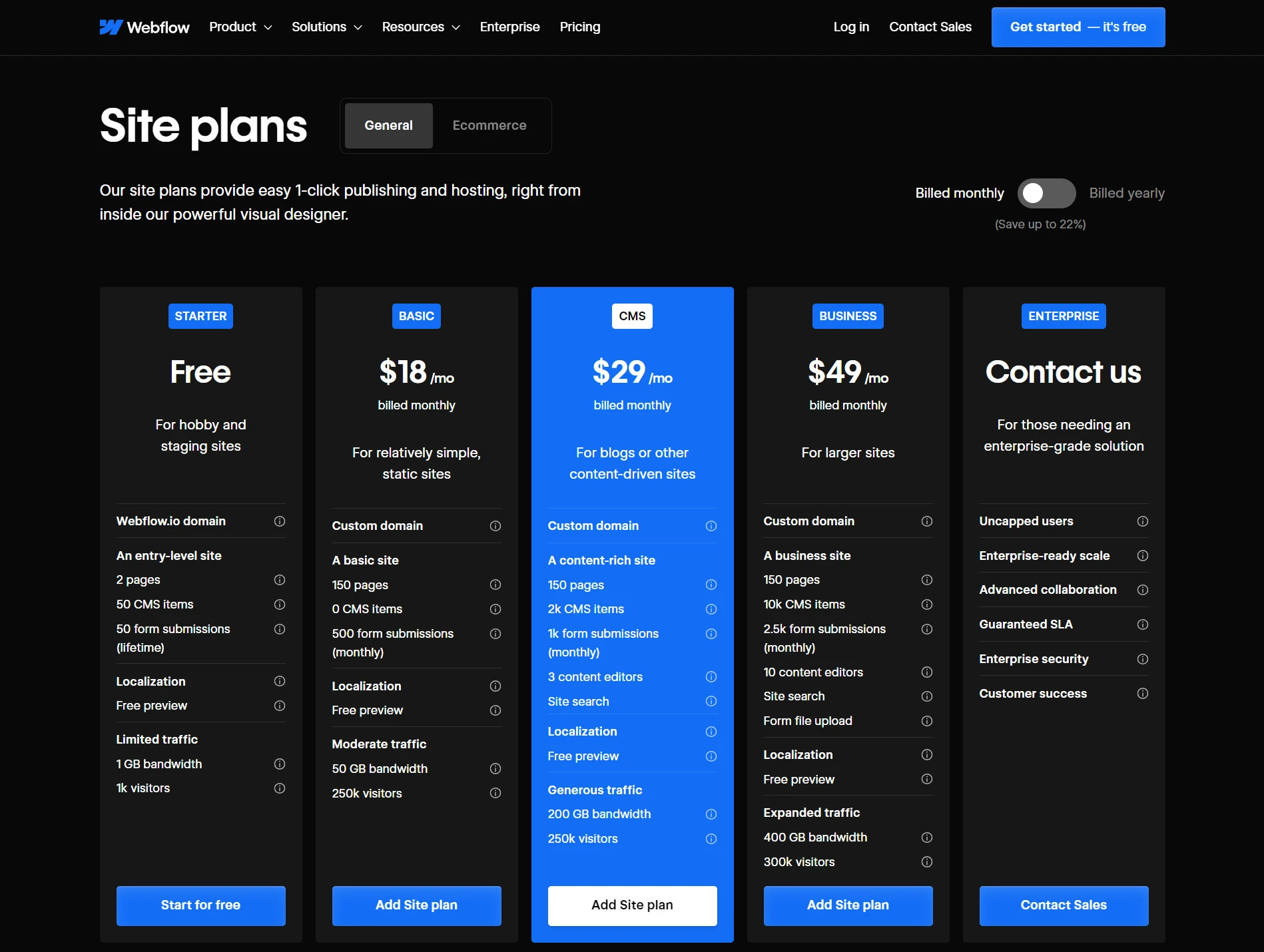
Notably, Webflow provides scalability for eCommerce sites too, with its Standard eCommerce plan beginning at $42/month (2% transaction fees), ascending to $235 for the most advanced needs (0% transaction fees on higher plans).
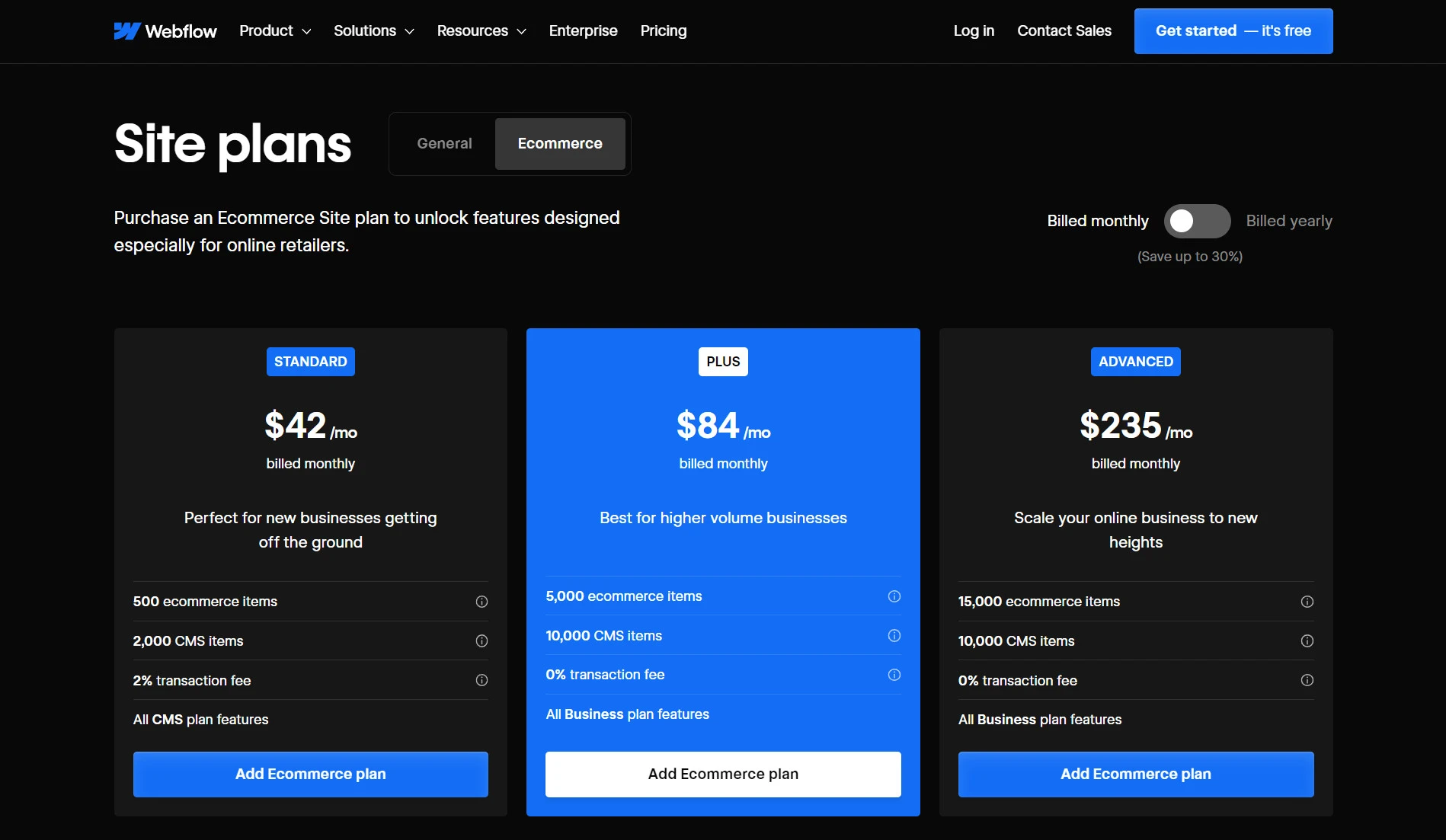
Wix
Wix also has a free plan. However, from our experience, Wix’s free plan is the same as Webflow’s—it’s for you to test the water only.
If you want to host a functional website, you’d need to subscribe to a paid plan, which begins at $17/month. This plan offers a bit more storage space and a free domain for a year.
The Core plan, at $29/month, and the recommended Business plan, at $36/month, add more features like increased storage and eCommerce capabilities. For enterprises requiring extensive features, Wix has the Business Elite plan, at $159/month, which includes unlimited storage and advanced sales and marketing features.

Also, unlike Webflow, Wix doesn’t charge transaction fees for any plan. This is a big advantage over Webflow if you manage a high-volume store.
📢 Wix wins.
What’s more, Wix’s pricing plans are more competitive. Not to mention that Wix’s transaction fee is 0% for all plans.
#2. Ease of use
We believe the majority of people searching for ‘Webflow vs Wix’ and finding their way to this article aren’t tech-savvy. Hence, let’s review the ease of use of the two platforms.
Webflow
Webflow positions itself as a no-code website builder platform. However, from what we have experienced, we believe Webflow’s interface is far from intuitive.
Don’t take us wrong. We don’t mean it is clustered or confusing. It’s just that the platform’s interface is designed to accommodate extensive customization options. This makes Webflow somewhat daunting for beginners who may not be familiar with the nuances of web development or basic CSS/HTML.
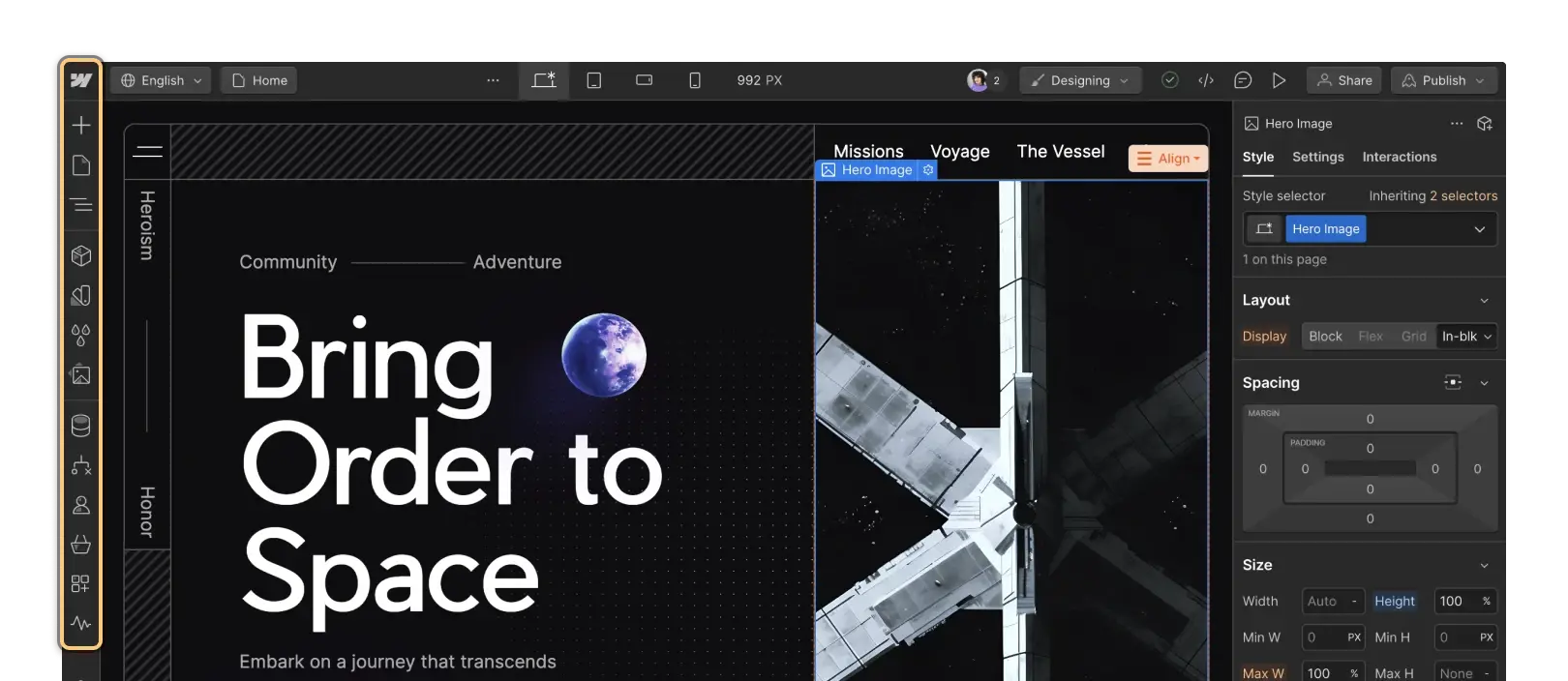
Wix
By contrast, Wix is much easier to use. With Wix, you can effortlessly rearrange any part of your website, such as photos, headings, and logos, with a simple click and drag directly on the website itself.
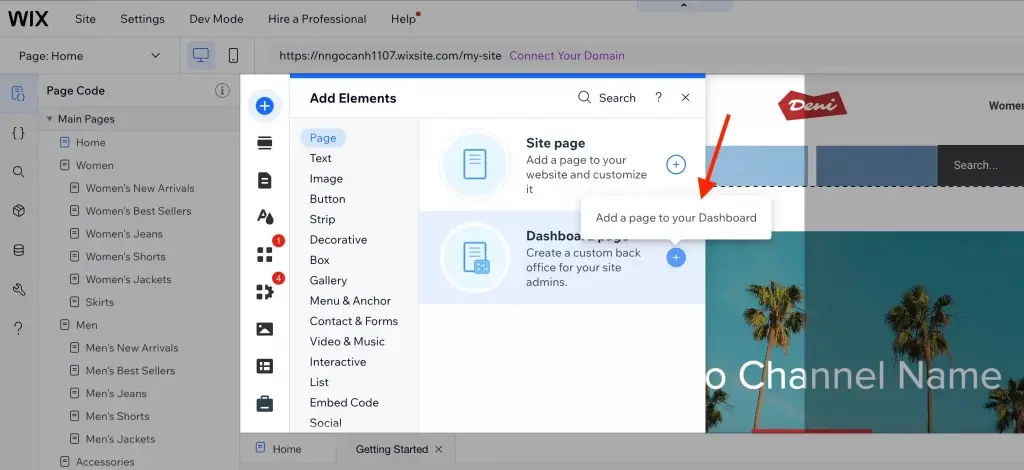
Moreover, Wix enhances the ease of starting your online store by incorporating AI technology through features known as Wix ADI.
First, the Wix ADI asks you a series of questions about your preferences and website purpose. Based on the responses, it automatically generates a custom website design tailored to your specific needs. This includes selecting appropriate layouts, color schemes, and even generating content.
📢 Wix completely overshadows Webflow regarding ease of use.
It’s clear between Webflow vs Wix. Wix’s design interface and the Wix ADI tool make website creation a breeze. Meanwhile, you might need some time to get the hang of Webflow’s complex user interface.
#3. Website templates
Webflow
Thanks to the contributions from a range of third-party designers, the variety of Webflow templates is notably broad, with 2,000+ templates, including 49 free options. The price for premium templates ranges from $19 to $129, payable as a one-time fee.
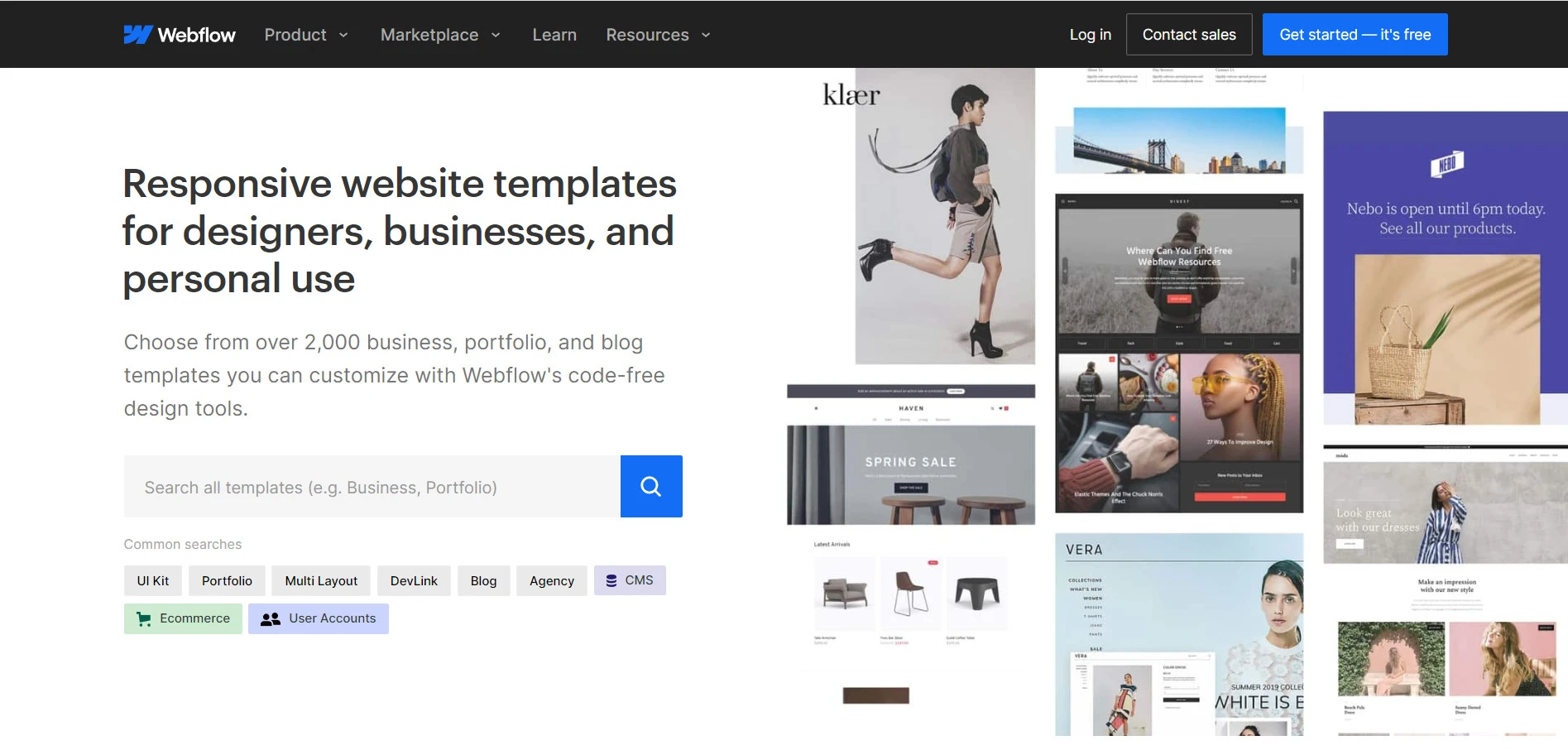
From our observation, most Webflow templates are also of superb quality. You can easily find any template pre-built for your needs. They range from portfolio and landing pages to eCommerce, weddings, and more.
Webflow also stands out in terms of mobile responsiveness. Unlike templates on other platforms, Webflow templates are truly responsive and adapt well to any device.
Wix
Wix offers 820+ templates. Though this number is much smaller than Webflow’s, all Wix templates are free of charge when you subscribe to a paid plan.
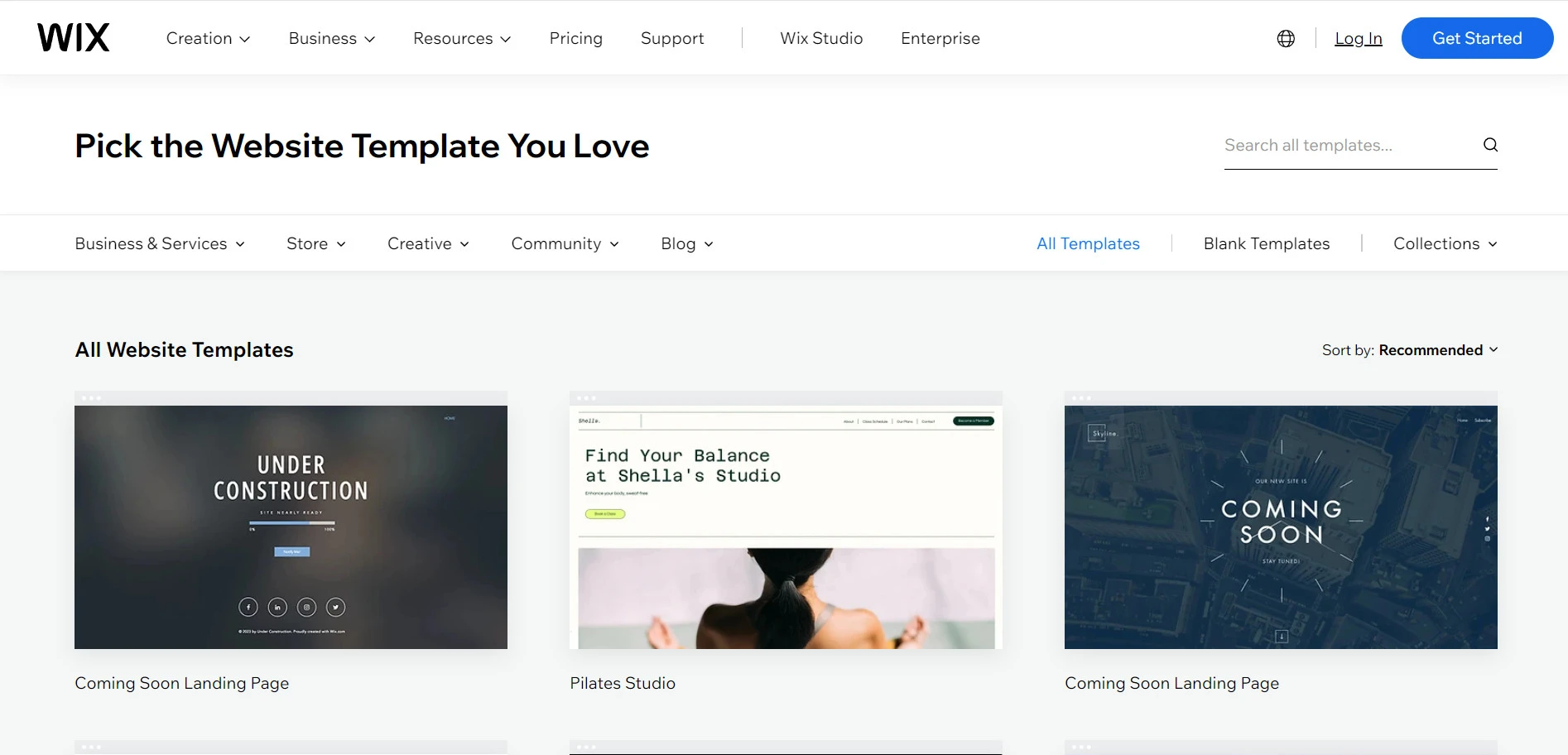
Although Wix may offer fewer customizations than Webflow, its website templates are easily suitable for any website type.
In terms of mobile-friendliness, Wix uses an adaptive design system for its templates, meaning you only get a fairly accurate mobile version of your site. This means you might need to tweak it for optimal, perfect mobile display.
📢 Webflow wins convincingly.
In terms of Webflow vs Wix templates, Webflow beats Wix in all possible aspects: quantity, quality, and mobile-friendliness.
#4. Design customization options
Webflow and Wix both offer an impressive number of pre-made themes. However, it’s still your job to customize your chosen theme to make it uniquely yours.
Hence, let’s continue our Webflow vs. Wix comparison by examining the two platforms’ design customization capabilities.
Webflow
Webflow’s design tool gives you the full magic of coding without actually having to do any coding. But what does that really mean? Well, it lets you:
- Have your website’s HTML and CSS code ready to share with your team.
- Put website elements exactly where you want them.
- Use drag-and-drop to edit your site easily.
So, with Webflow, you can use all its design features (like those listed above) and drag and drop basic HTML elements. For example, you can add pre-made items like sliders, tabs, background videos, and more — all customizable and starting from scratch.
Plus, you can drag in blank layout pieces to arrange your elements just right. These include things like containers, dividers, grids, columns, and sections. Another thing we like about Webflow is that it lets you position things exactly how you want, using inline blocks and absolute positioning.
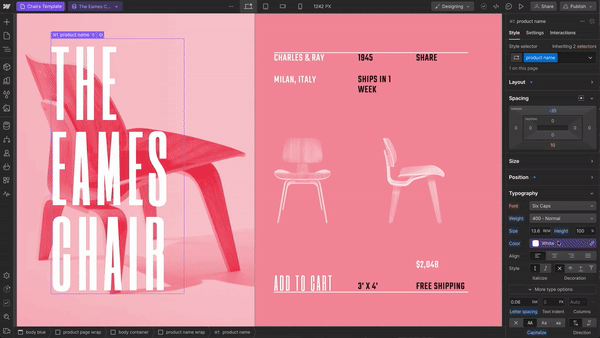
Wix
Wix theme editor allows you to add and customize a wide range of website elements easily. This includes sections, images, galleries, headers, text, videos, contact forms, lists, grids, buttons, etc.
You can change each section’s background and customize each element based on their specific customization features. For instance, you can adjust the font size, style, color, highlighting, linking, and alignment of a text-based section.

In addition, Wix includes a media editor for uploading, handling, and editing images. This lets you alter your images’ brightness, contrast, highlights, shadows, color saturation, and more, along with the option to apply filters and crop your images to fit.
Nevertheless, there are several limits to the customization Wix offers. Most Wix templates enforce a responsive layout that centers content, limiting how far you can deviate from the template’s default layout.
For instance, control over the spacing between specific elements is somewhat restricted, and placing elements precisely in the corners can be challenging.
📢 Webflow is the winner in this round.
It’s obvious between Webflow vs Wix. While Webflow’s interface might overwhelm beginners, Webflow gives you deep control over how your website should look and work.
#5. eCommerce features
To activate online selling features, you’d have to be on Webflow and Wix’s plans that support eCommerce. For Webflow, this involves choosing from the ‘Standard,’ ‘Plus,’ or ‘Advanced’ eCommerce plans. With Wix, you’ll need to be on the ‘Core’ plan or above.
Now, let’s explore the ecommerce capabilities provided by both platforms.
Webflow
Webflow offers foundational eCommerce features, including the ability to sell physical and digital items, manage shipping, and accept payments online. However, it sets a cap on the number of products you can sell, with its highest-tier plan allowing 3,000 sales per month only.
You’ll need to integrate third-party apps for functionalities such as digital downloads, subscriptions, and abandoned cart recovery.
Webflow is also limited to 2 payment gateways and lacks a native POS system and multichannel selling features, making it less comprehensive for larger-scale online retail operations.
Wix
In contrast, Wix provides much greater built-in eCommerce features compared to Webflow. Wix lets you add up to 50,000 items. The platform also offers built-in abandoned cart recovery and subscription-selling features.
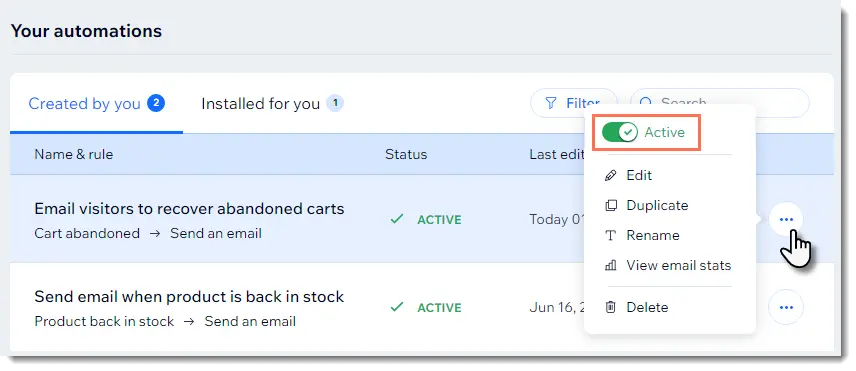
Plus, Wix comes with a native POS system and supports over 100 payment gateways. Its eCommerce functionality even extends to dropshipping capabilities, tax and shipping configurations, and multichannel sales – all without transaction fees.
Additionally, you can translate your Wix website into different languages and show prices in different currencies.
📢 Wix completely defeats Webflow.
Wix wins with more extensive eCommerce features, no transaction fees, and a vast range of integrated sales channels and payment gateways.
#6. SEO features
Whether you want to build an eCommerce store or a personal portfolio, it helps to optimize your website for search engines. Hence, let’s examine Wix vs Webflow SEO.
Webflow
Webflow is well-known for its robust SEO functionalities. The platform gives you complete control over your site’s meta titles, descriptions, and URLs. This is especially beneficial for those with a good grasp of SEO practices, as Webflow’s clean and semantic code structure allows for deep indexing by search engine bots.
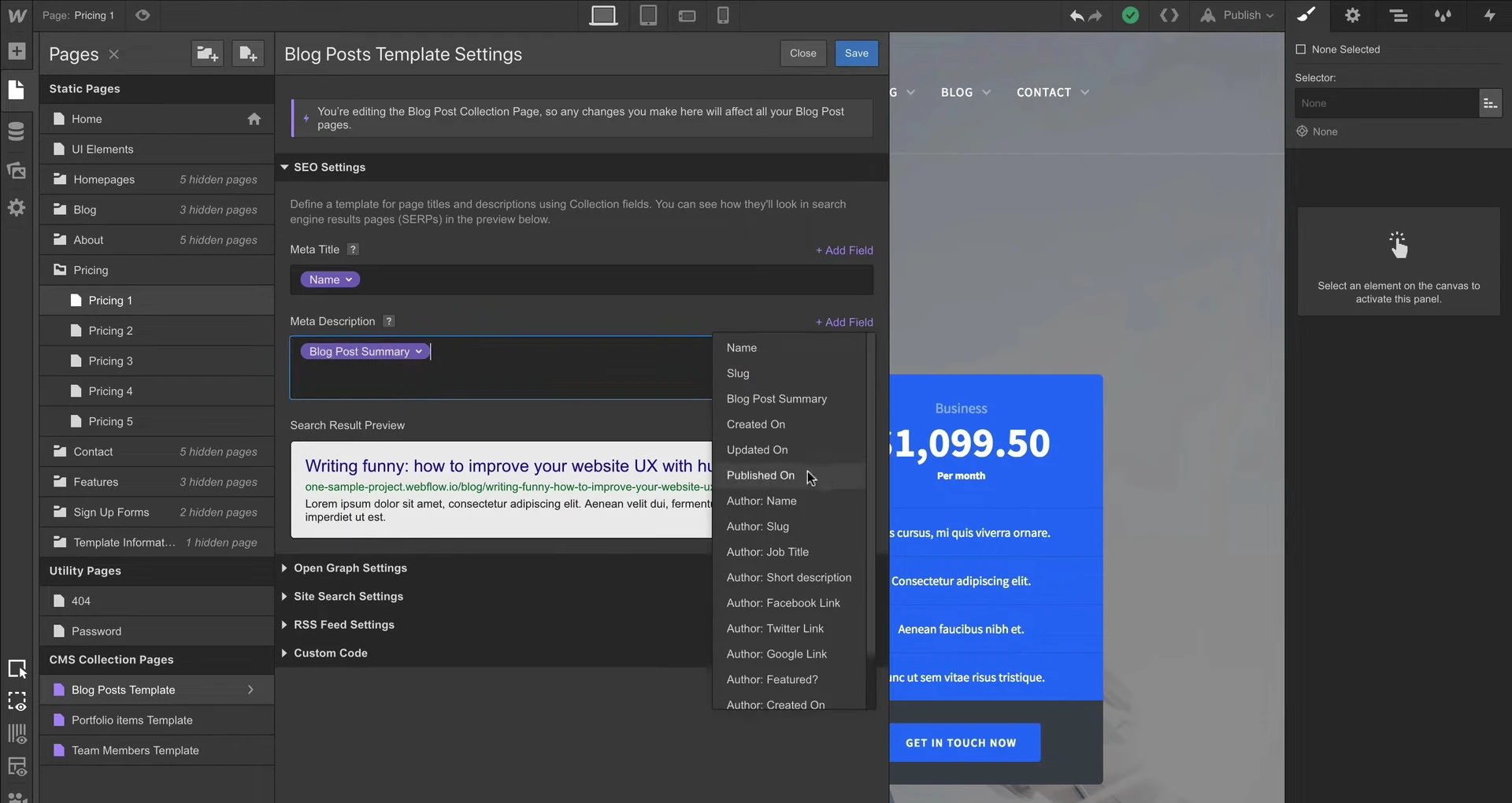
In addition, you’d benefit from advanced SEO functions such as schema markup, which helps search engines better understand and display content to users. Plus, Webflow hosting is speed-optimized, a key factor in search engine ranking.
Wix
Meanwhile, Wix offers user-friendly SEO guidance through its Wix SEO Wiz feature, providing a step-by-step plan for website optimization. This, along with its suite of basic built-in SEO tools, makes Wix a good option for those new to SEO.
Like Webflow, this website builder users have educational resources and apps to improve online visibility, along with various tips for optimizing websites for search engines. While the platform requires some SEO knowledge for the best results, it ensures that even novices can improve their site’s SEO.
📢 Webflow has greater SEO features.
Webflow is particularly beneficial for those aiming for deep SEO customization.
#7. Support
Getting timely support is important when you run into issues you can’t fix yourself. Therefore, let’s close this Webflow vs Wix comparison by reviewing the last but not least aspect: customer support.
Webflow
Webflow provides customer support primarily through email. The team is available Monday through Friday from 6 a.m. to 6 p.m. PT.
While they may not offer live support channels, Webflow has created an extensive self-help resource known as Webflow University. Here, you can access courses ranging from beginner to advanced levels, covering a broad spectrum of topics to assist with learning the platform.
Wix
Wix offers a more comprehensive customer support experience, with 24/7 support via their contact page. In addition to email and callbacks, you also have free access to Wix’s extensive self-help documentation and a tidy editor help system that links you to relevant resources.
Additionally, the platform even provides you with support material like the ‘Wix SEO Wiz’ and help videos to aid users in optimizing their sites and using various features.
📢 Wix offers better customer support than Webflow.
Between Webflow vs Wix, Wix is the winner for its round-the-clock customer care and more contact options.
Wonder how the top 3 website builders like Wix vs Squarespace vs Webflow stack up against each other? Here are a few articles you might find helpful:
- Webflow vs Squarespace: Which Builder Reigns Supreme?
- Wix vs Squarespace: A Detailed Comparison On Key Features
Final Verdict on Webflow vs Wix Comparison
We don’t mean to sound ambiguous, but there’s no such thing as ‘winner’ here. Both Webflow and Wix are great in their own way.
[wptb id=72358]
Webflow vs Wix – FAQs
[sp_easyaccordion id=”72356″]
Conclusion
All in all, Webflow vs Wix are both powerful website builders that come with their own merits. And LitExtension – #1 Shopping Cart Migration Expert hopes after reading this article, you can pick the one that fits you the most.
Don’t forget to read LitExtension’s blog and join our active Facebook Community for all the latest eCommerce news, tips, and tricks.